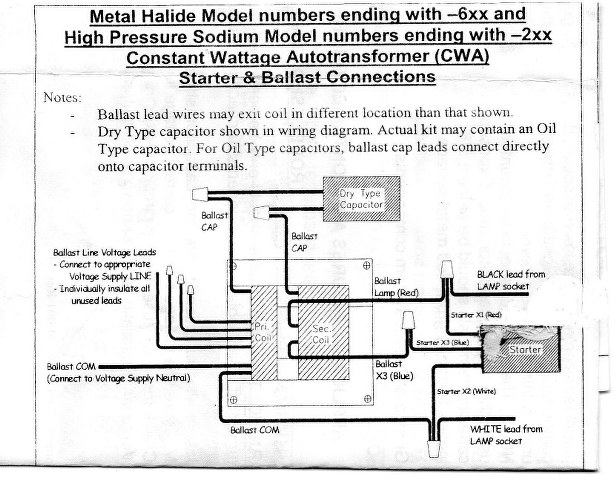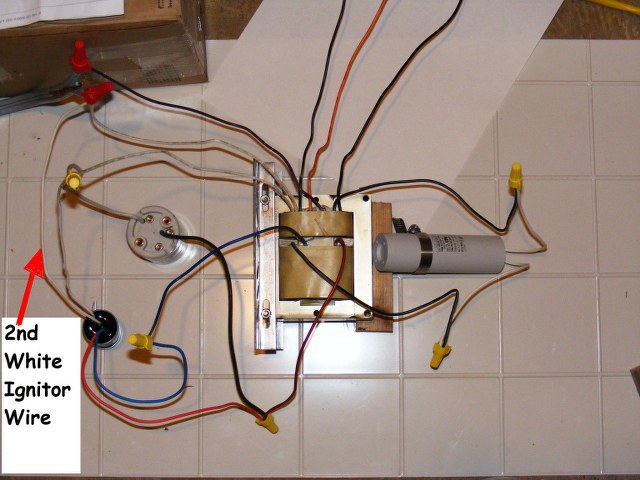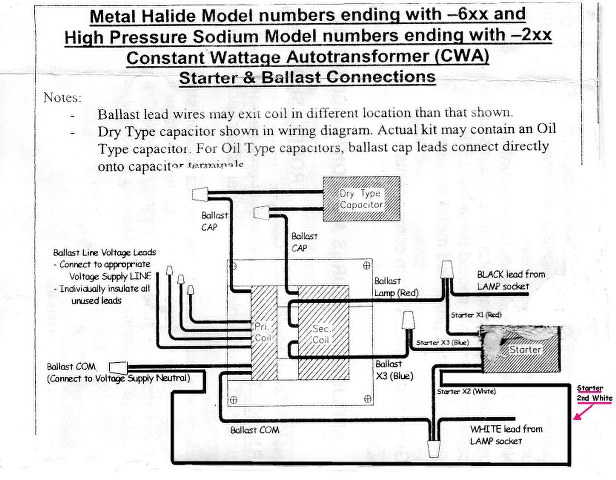dude you got me confused now...if it was on my bench it would be fired up by now.
ok so your saying there was a second CAP wire? on the secondary side on your ballast? if so then the ballast info you posted did NOT show that secondary side Cap wire. It showed it going from Cap wire primary side TO cap TO common.
Did you talk to a lady or a guy? I called and they told me that the CAP goes to the common and the wire labeled CAP from the primary. because of oil filled polarity not an issue. per my phone convo. yep I called your ballast manufacturer yesterday.
They say cap off the second white wire on the ignitor... "it doesn't need to go anywhere"...
common is no where. They are right. It goes right where i said and the schematic you gave me showed it.
Finally your starter IS on the secondary side. blue to blue red to red/socket thats ALL on the secondary. The way you have it wired now.
I love "that';s a great way to "inject 2400v into your house wire"
ummmm it would trip the breaker. Thats it. "inject" I love it. LOL overload, short, open, those terms make sense....inject LOL someone also didn't bother learning things like P=IV.
your wired up right, but at no point was a second cap wire mentioned in the schematics you gave me or any post.











